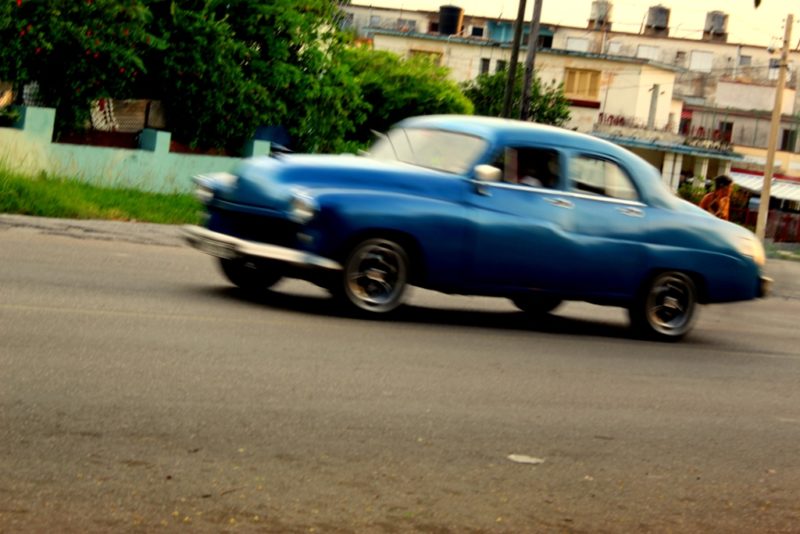Havana Seen from the Diversity of Its Cars

Photo Feature by Ernesto Gonzalez Diaz
HAVANA TIMES – Havana has an interesting mix of cars circulating through its streets and avenues. From classic United States cars, in different states of conservation, to old and more modern cars from several different countries.
The classic cars are multifunctional, since you can find a jeep or a truck from the 1940s and 50s converted into taxis, as well as a vehicle used to transport cargo. In short, they can be seen in multiple functions, often depending on the level of conservation they may have.
In the images that we show you can see several of these cars, some very well preserved, which look like authentic museum jewels and others that can miraculously operate. You can also see some of the vintage VW Beetles.
Russian Ladas from the 70s and 80s also circulate around the city, Peugeots from the same period that were acquired in Argentina in 1976, Fiat, Polski, Volgas, Moskvich, are among those that arrived in the country at the time we belonged to the CAMECON. Of course they are currenly in different levels of conservation.
More recently, French cars like Peugeot and Citroen, Japanese cars like Mitsubishi and Subaru, and Korean Hyundai and Kia entered the country. Modern Chinese cars of different brands such as Geely and BID also circulate in the city, almost all belonging to state-owned companies and the tourism industry.
The buses used by the state public transport companies, Transporte Habana and Transmetro, are Chinese-made Yutong and the also state-owned company Taxis Cuba has a Russian Gazella minibus service.
In recent years, the streets of the city have been flooded with electric motorcycles and electric tricycles and small pickups, the latter used for both cargo and passenger transport.
In a city where the majority do not have their own car, transportation becomes very difficult. The crisis in the fuel supply is still very much present and every day most Havanans when trying to get to work or a study center ask themselves the difficult question: What will I take today?






Gracias a todos por sus comentarios
Excellent series of photographs.
During my visits to Cuba I have photographed over 2000 vehicles !!
The Chinese vehicles supplied to Cuba are absolute rubbish and should be BANNED from your roads.
Best wishes from Brian.
Nice expose of transportation methods in Havana.
I don’t know about Havana, but in other parts of Cuba there are also “invented” types of motorized transportation. Skilled Cuban mechanics will take a Lada engine from an old dilapidated Lada car and mount the
engine on an old rickety, steel framed, tri-wheel contraption which when pushed, to jump start the so called vehicle, actually transports Cubans.
Certainly a sight to see and a form of much needed transportation in Cuba today, and much needed income for the Cuban chauffeur.
The interesting article ends with this question on the minds of everyday Cubans: “What will I take today?” For the majority of Cubans either going to work, students going or coming from school, mothers coming or going to town with children take the horse and buggy transport. For the majority of ordinary Cubans this method of transport is the least expensive, most convenient, and most available.
“Cochero, cochero donde tú va?” can be heard from most Cuban neighborhoods as potential passengers navigate their way around their community. Owning a car for the majority of Cubans is a pipe dream. Even taking a taxi is prohibitively expensive with the price of gas or petróleo unaffordable.
Bici-taxi is another ubiquitous transportation method either for a passenger or two or to transport just about anything from refrigerators to broken down bicycles. Bici-taxis come in all shapes and sizes from pedal pushers to motorized musically enhanced rides.
And of course there is the bicycle. For an ordinary Cuban a brand new bicycle is exceedingly expensive and without outside help from a monetary remittance – unavailable.
Fidel Castro once asked by a reporter about the physical fitness of his nation replied Cubans do not have to jog or exercise because all Cubans ride bicycles. In retrospect, yes, that’s true, but more truthfully Cubans ride not because they want to, or for exercise, but use the bicycle as their only form of transportation to and from their destination daily rain or shine. It’s more of a struggle than recreation.
Getting around Cuba today is a monumental task if one does not have money available for transportation. Cubans spend hours on roadsides waving monetary bills at taxi drivers or anyone with a car for transportation to their destination because the so called Cuban bus system is inadequate, totally unreliable, and frustrating.
The topic is very interesting. Great pictures! Congratulations to Ernesto Gonzalez Diaz